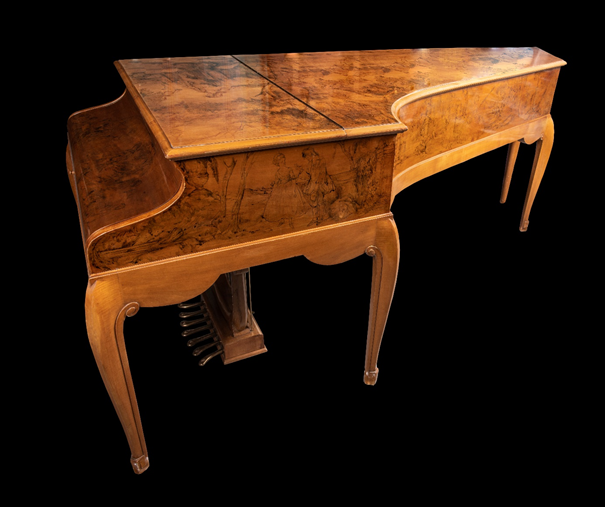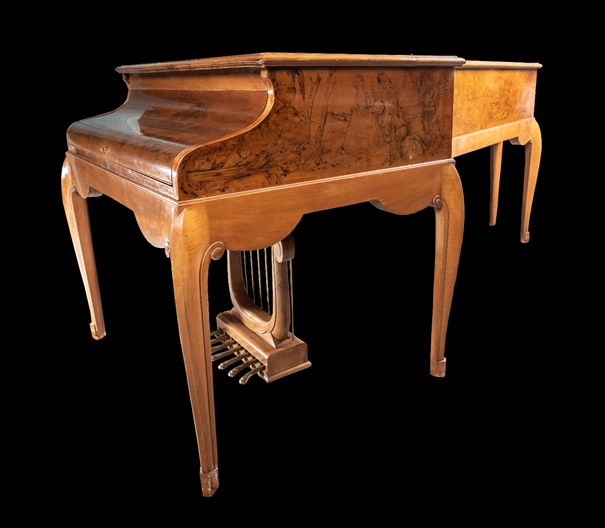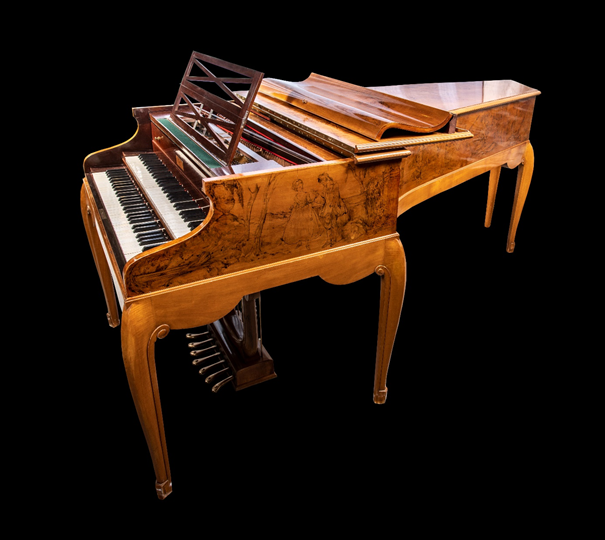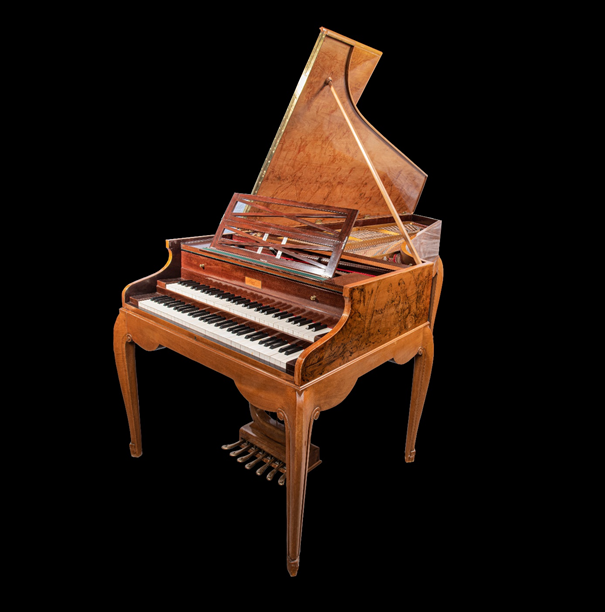PLEYEL HARPSICHORD
ART-DECO FAIR, PARIS 1925.
Furniture by SUE & MARE – Decor by Bernard NAUDIN – PARIS 1925.
Exhibited on the Pleyel stand at Pont Alexandre III
at the Salon des Arts Décoratifs in 1925
This instrument bears the manufacturing number: 54F969, and the serial number 184344.
According to Pleyel documents of the time, it is a Large Model harpsichord, pearwood veneer, started on December 4, 1915, left the factory on February 3, 1928 and sold the next day to Mr. Mac Cormick in Paris.
Planned in 1912, the Exhibition of Decorative Arts in Paris was to open its doors in 1915 but was canceled due to the First World War.
The body of the harpsichord, unfinished, is stored in the Pleyel workshops until the new Exhibition project of 1925
The design of the instrument was then entrusted to the architects – decorators Louis Süe (1875-1968) and André Mare (1885-1932), while the ornamentation was the work of the painter and illustrator Bernard Naudin (1876-1946).
With regard to the main repertoire of the harpsichord and its symbolic image, references to the “Grand Siècle” style are visible both in the motifs represented and in the lines of the furniture, in particular the base with the “art-deco arch” so typical of Süe and Mare.
The Revue Pleyel, in its n°18 of 1925, presents the pieces exhibited at the Salon des “Arts-Déco” and concludes as follows: “Finally, a delicate and precious creation, here is the harpsichord composed by Bernard Naudin with the collaboration of Süe and Mare , a very important work whose charming archaism demonstrates that modern taste can sometimes happily blend with the grace and spirit of the most exquisite works of the past. » G. REMON
Nevertheless, the pianos, more modern, are preferred to him to appear in the great hall, which triggers lively controversies. The magazine l’Art Vivant, in its N°2 of January 1925, four months before the opening of the Salon, published a virulent article against this decision: “At the Exposition des Arts Décoratifs, the harpsichord decorated by Bernard Naudin was refused. ! »…
In fact, the instrument will be presented “on the Pont Alexandre, in one of the shops built on the plans of Sauvage and whose architect is Mr. René-Herbst, one of the most daring and surest decorative artists of this time. ,” reads the brand’s review. “Pleyel is exhibiting an imposing group of models, a highly significant set of sufficient variety which proves to us the spirit in which his research has been pursued, both faithful to tradition and in conformity with the most scrupulous requirements of the taste of the day… and tomorrow. »
The instrument bears on the capital the name of all the specialists who took part in its elaboration. After the Salon, it was exhibited in the Pleyel room and then sold on February 4, 1928 to the American industrialist Harold McCormick (1872-1941) for the sum of $ 6000.00, or 152,700 FF. (Remember that a classic model of the brand sells for 30,000 FF.)
Mac Cormick financed the purchase of the Société immobilière du Théâtre des Champs-Elysées, under the direction of his wife Ganna Walska and the conductor Walther Straram. This theater will become one of the high places of the contemporary music of the Thirties.
The instrument is fashionable. After Manuel de Falla, (“Concerto for harpsichord and five instruments”) Francis Poulenc then composed his “Concert Champêtre”, a work for harpsichord, in homage to Wanda Landowska.
This is the only harpsichord designed by leaders of the Art-Deco period, having also participated in the inaugural Salon of 1925.



